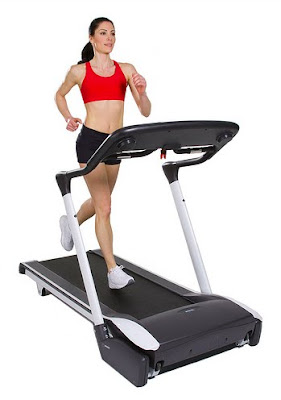"I thought you were kidding! I thought it was a
joke, I even wrote it down in my diary."
Bold title of me to choose? Possibly.
In the first installment, we took a look at how women are not satisfied with their body due to changes that come about in life, as well as some interpersonal influences, that push women to exercise, but certainly not efficiently.
Today in part 2, we'll discuss subtle less known societal factors, which believe it or not, are significant themselves.
One day, my ears caught the following:
"Yeah she plays sports and is athletic, but I don't really like girls like that."
I thought it was absurd, but I didn't know the guy, so I just kept walking.
It wouldn't be a big deal, but it's not the first time I've heard such a statement. Some guys aren't attracted to a girl who takes up weight training. They either don't like muscles on a girl, think it's not part of the "proper" feminine role (whatever that is), feels it threatens their alpha male status, or some other outlandish idea.
And of course, women want to impress the opposite sex, but not in an unattractive manner (i.e., lifting weights). As a result, they either go hit the lovely cardio machines or that small area of the gym with dumbbells no higher than 35 lbs. If it's the latter, they still don't lift a weight that's heavier than a gallon of milk.
What if they venture into - gasp! - the guys' area and do real lifting? All the guys, unfortunately, stare. I'm sure that's what they were trying to accomplish. The only women their lifting like they should, and all eyes are on her. I bet that makes her feel so much more comfortable - yeah right.
All that combined with those women who believe it will bulk them up, well you could understand why they would never venture near a barbell.
What about the media? What do they do in all this?
Plenty. Models anyone? Tall, thin, and most importantly, unrealistic.
There's a large gap between what they present and what is typical of most women. If the average body weight of women has been increasing, due to improved health and nutrition, how are they suppose to look like a model? The average American women is 5'4" tall and 140 lbs., but the average American model is 5'11" and 115 lbs. These women aren't representative of the norm, but are presented as the ideal figure.
Let's not forget magazines and the images they publish. The rise of computers has allowed us to do incredible things. Photoshop however, is now used to edit photos before they are published. A great demonstration of how drastic the changes are can be seen in the following video.
Women see those magazines and want to look like that, but it's not even possible!
Television shows have the main characters as slim women. How often is the leading actress not attractive? or large? Usually, not a lot, except maybe Ugly Betty.
Ugly Betty left, and on the right, you can
see America Ferrara is hardly ugly.
Addition to that, these women in movies and TV are depicted as successful and powerful.
Advertisements try to make women feel unattractive because they're trying to push what they're selling, hoping they'll provoke women enough to buy it.
Now, we have more factors added to the previous ones mentioned last time. Exercise and health is tougher for women than it should be.
- Increased bone density, reducing risk of osteoporosis
- Stronger connective tissues to increase joint stability and help prevent injury
- Increased strength for daily activity
- Increased lean body mass and decreased body fat
- Higher metabolic rate because of increased muscle mass
- Improved self-esteem and confidence
The bottom line?
There are a lot more factors affecting women in relation to exercise than there are that affect men. Don't let them come between you and the body you want.
So just lift. Suzanna Sanchez does, and boy, does she go heavy.
Next week, part 3 will cover the common mistakes and problems that women encounter in training and diet. Stay tuned!



